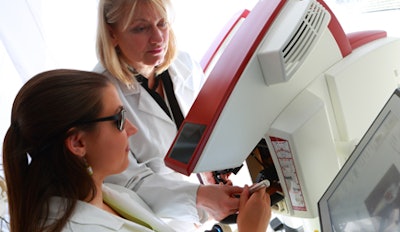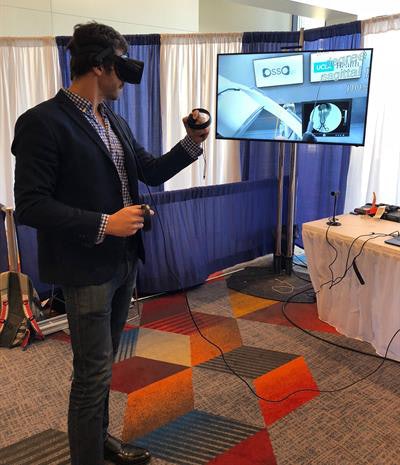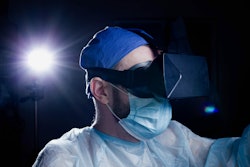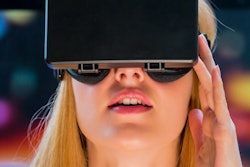
This is a two-part series exploring the potential and real applications for virtual reality (VR), augmented reality (AR), and mixed reality (MR) within dentistry. Part 1 focuses on use in dental education and practice. Part 2 will look at how these technologies can improve the patient experience within a traditional dental clinic.
A complicated case is scheduled for tomorrow. You've already looked over the scans and come up with a treatment plan, but you still want a little extra preparation. So you load a file on your computer, slip on your virtual reality headset, and run through the case from start to finish. By the time your patient walks through the door the next day, you know exactly what you're doing. After all, you've already run through the case once before.
No, this isn't "Ready Player One," "The Matrix," or "Avatar," but just one example of how virtual reality and its cousins augmented reality and mixed reality are poised to change the way dentists learn, practice, and interact with patients. From advanced simulated training modules to virtual experiences that have proved to reduce pain, VR and AR are taking hold in schools and clinics, and the possibilities of these technologies are just beginning to be explored.
This is the new age. The future is now.
Welcome.
The virtual revolution starts in school
Believers have touted that the virtual reality revolution has been coming for decades, but the technology has yet to gain widespread appeal. However, that seems to be changing thanks to newer devices that are cheaper and easier to use than ever before, as well as a little ingenuity on the part of healthcare providers, like Tim Ringrose, MD.
Dr. Ringrose is the CEO of Cognitant, a U.K.-based company that specializes in creating immersive healthcare content, including for VR, AR, and MR. He thinks that this kind of content has numerous applications for dentistry.
“AR and VR are critical technologies that will enable us to address critical issues as we move into a future filled with challenges.”
"VR could allow a patient to see the anatomy of a tooth and understand the nerves and roots and how a root canal treatment works," Dr. Ringrose told DrBicuspid.com. "AR, on the other hand, could allow dentists to look at x-rays in their glasses as they operate, and MR could allow dentists to change the settings on their equipment via their goggles."
And while the possibilities may seem surreal, they're already taking hold in medical schools, where the next generation of healthcare providers are using VR and AR to interact with animated simulations of body structures and hone their clinical skills.
For example, Case Western Reserve University is working with Microsoft and the HoloLens headset to develop augmented reality advanced anatomy courses for medical students. In the course, students learn by interacting with 3D renderings of anatomical systems and structures, and those who have used the technology report that it's better than working with a human cadaver. In fact, the new high-tech campus that Case Western is developing won't even have a cadaver lab.
But virtual reality isn't just for medical schools. In 2015, the University of Pennsylvania School of Dental Medicine (Penn Dental Medicine) became the first school in the Americas to use Moog's Simodent dental simulators. These VR devices help students learn the clinical basics, and unlike other trainers or resin models, the machines provide haptic (touch) feedback. This way, students can actually feel the simulated difference between drilling into carious and sound tissues, as well as experience using various handpieces.
 Dr. Margrit Maggio works with a student on a Simodent simulation unit at Penn Dental Medicine. Image courtesy of Penn Dental Medicine.
Dr. Margrit Maggio works with a student on a Simodent simulation unit at Penn Dental Medicine. Image courtesy of Penn Dental Medicine.Students who learn with the new simulators are better prepared by the time they set foot in the clinic, and students will often come back to the simulators to practice before working on a patient, noted Penn Associate Professor Margrit Maggio, DMD, in a Moog company video.
"This allows the student to be better prepared for treating real patients in the clinical setting," Dr. Maggio says in the video. "It won't be the first time they've experienced this feeling."
Not just for beginners
The use of VR and AR is not just for learning the basics, though, or at least that's the hope of several VR companies that want to help students prepare for make-or-break exams and clinicians to prepare for complicated surgeries. One of these companies, Osso VR, uses virtual reality to improve the surgical training experience.
 Dr. Justin Barad demonstrates the Osso VR virtual surgery simulator. Image courtesy of Osso VR.
Dr. Justin Barad demonstrates the Osso VR virtual surgery simulator. Image courtesy of Osso VR."Our system of medical training has not changed in over a century," Osso VR CEO Justin Barad, MD, a practicing orthopedic surgeon, told DrBicuspid.com. "Currently, there are critical issues in the way surgeons are trained, both in residency and beyond."
With Osso VR, surgeons or surgeons in training select the procedure they want to practice, grab two handpieces, and slide on their VR headset. They can then practice on a virtual operating table with a virtual patient, and the system displays metrics at the end to help them analyze and improve their performance.
While Osso VR currently targets orthopedic surgeons, Dr. Barad believes the application is transferable to the dental realm, particularly for oral and maxillofacial surgeons who often perform highly complex surgeries with difficult anatomy. However, he also thinks we're just scratching the surface of what these technologies can do for healthcare.
"AR and VR are critical technologies that will enable us to address critical issues as we move into a future filled with challenges," Dr. Barad said. "We need to augment surgeons in order for them to do more and at a higher quality. Robotics will likely play a major role and will interface with XR [extended reality] technologies to make this brave new future a reality."
The Osso VR was designed as a surgical training platform. Video courtesy of Osso VR.
We're still in the early stages of developing virtual tools and technologies to improve upon dental education and practice, but there's one place that existing technologies are ripe to change right now -- the traditional dental clinic. Part 2 of this series will explore how general dentists and specialists can use technology that already exists to boost case acceptance, help patients feel at ease, and generate new leads.



















